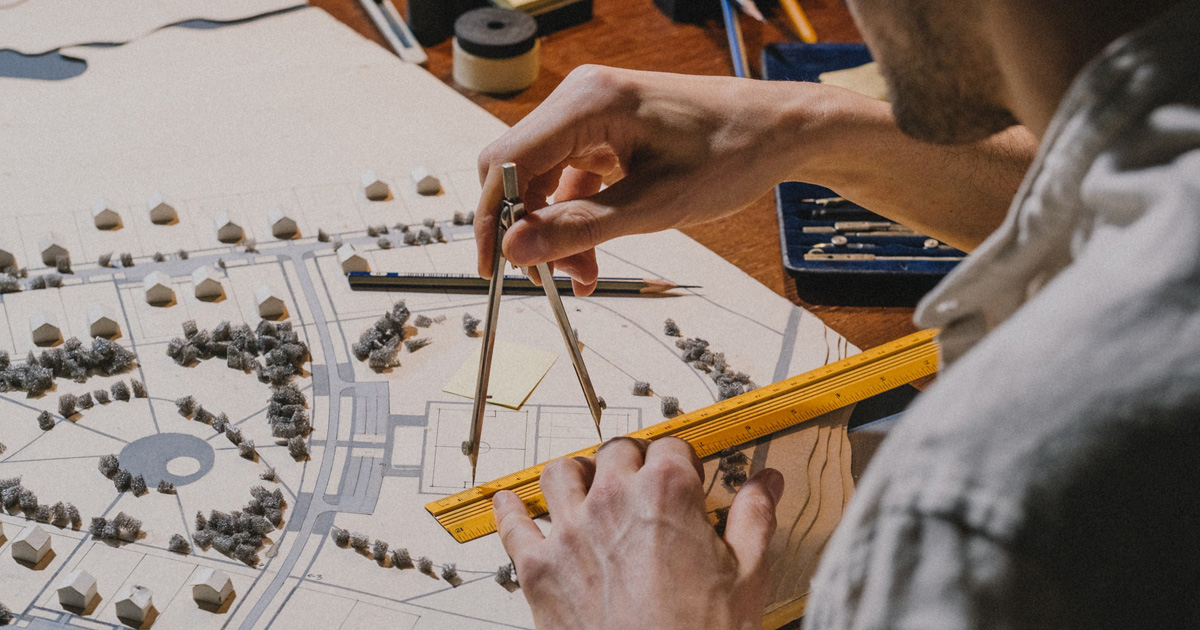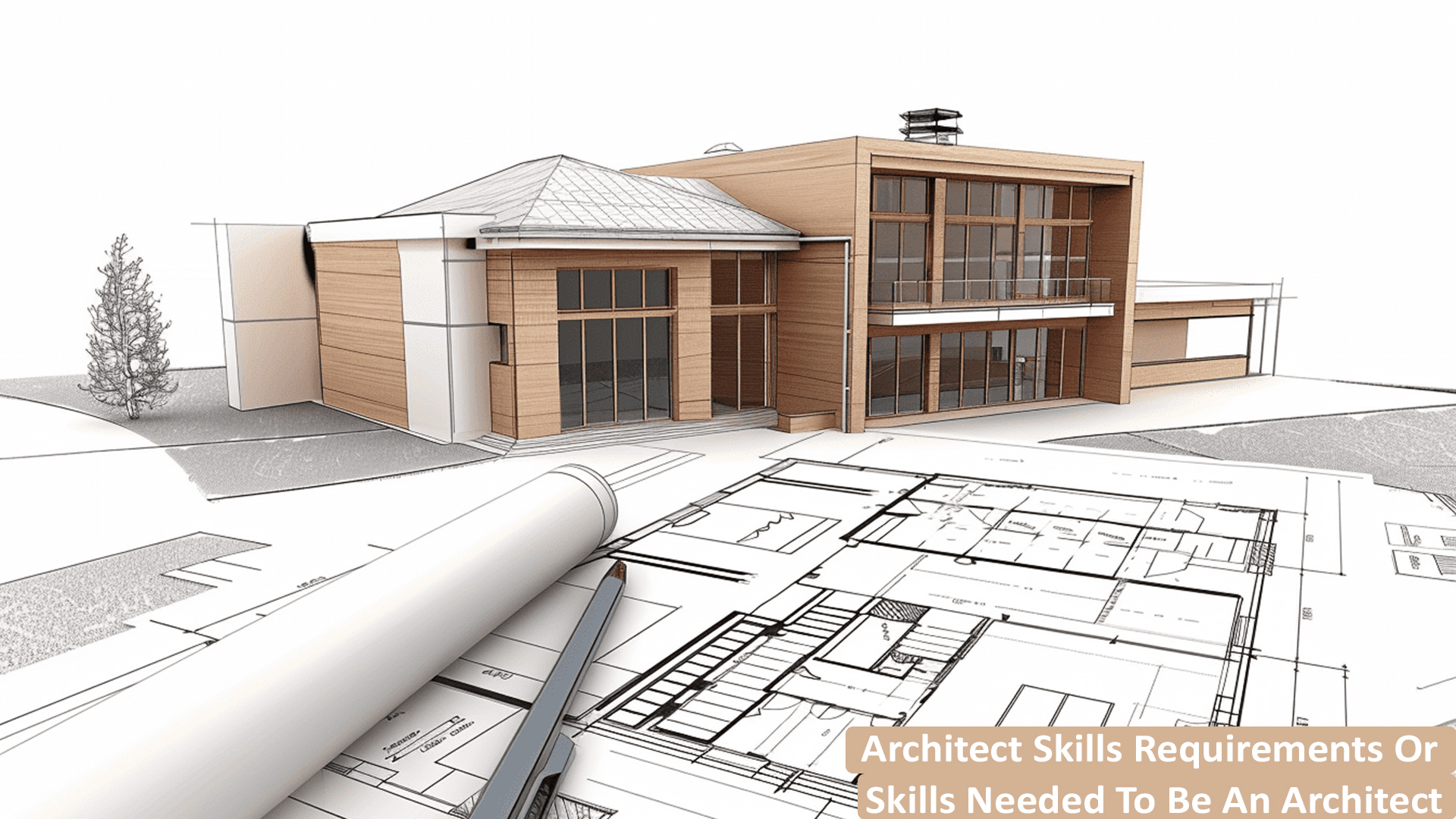Architect Advice on Utilizing Small Urban Spaces
Architect Advice on Utilizing Small Urban Spaces
Blog Article
Comprehending the Diverse Job Paths Available for Aspiring Architect
As an ambitious Architect, you have a globe of profession courses waiting for you. Each course offers special challenges and chances to use your creativity and technological expertise. Whether you're drawn to typical architecture or the subtleties of sustainable style, there's a niche that straightens with your interests. Recognizing these diverse choices can form your professional trip, yet which direction will you select to discover first?
Standard Style: Creating Structures and structures
Standard style focuses on creating structures and frameworks that mix capability with aesthetic allure. As you explore this field, you'll value the intricate equilibrium in between kind and function. You'll find out to draw ideas from historical styles, integrating elements like balance, products, and craftsmanship. Your designs can show social heritage, showcasing local traditions while meeting contemporary needs.
You'll develop skills in preparing, model-making, and site evaluation, permitting you to envision and interact your concepts properly. Involving with customers, you'll need to understand their vision and convert it right into practical designs.
In addition, building codes and sustainability methods are important in your job, guaranteeing your structures are risk-free and eco-friendly. As you expand in your profession, you'll locate chances in domestic, commercial, or even remediation tasks, each offering one-of-a-kind obstacles. Welcoming standard design paves the way for a fulfilling job that admires the past while forming the future.
Urban Preparation: Forming Neighborhoods and Public Spaces
As a hopeful Architect, you can play a necessary duty as a metropolitan coordinator, transforming exactly how neighborhoods work and communicate. By using area interaction techniques, you'll ensure that locals have a voice in forming their setting. And also, incorporating lasting style concepts will certainly help develop areas that not just satisfy today's demands however additionally shield the future.
Function of Urban Planners
While numerous could consider engineers as the sole enthusiasts behind buildings, urban organizers play a necessary function fit the more comprehensive landscape of neighborhoods and public rooms. They assess land usage, zoning laws, and neighborhood requires to create lasting settings that boost quality of life. By working together with different stakeholders, you'll help create parks, transport systems, and houses that promote social interaction and access. Urban planners additionally focus on ecological considerations, ensuring that developments incorporate green areas and assistance biodiversity. Your know-how in spatial style and community characteristics allows you to picture future growth while maintaining social heritage. In this important function, you'll directly affect just how people experience their environments, making every project a chance for favorable change.
Neighborhood Interaction Techniques
Reliable neighborhood engagement methods are important for urban planners to ensure that the voices of homeowners are listened to and valued in the planning procedure. To foster meaningful discussion, you ought to focus on open forums and workshops where community members can reveal their concepts and concerns. By proactively including and paying attention comments, you'll produce rooms that show the area's needs, eventually leading to even more lasting and successful metropolitan atmospheres.
Sustainable Style Concepts
When developing metropolitan spaces, incorporating lasting layout concepts is important for creating settings that prosper both ecologically and socially. Think about integrating eco-friendly rooms, like gardens and parks, to enhance biodiversity and improve air quality.
Designing with water preservation in mind is additionally essential-- consider rain gardens and absorptive surface areas to manage stormwater. Including neighborhood participants throughout the planning process guarantees that the rooms you create meet their needs and encourage social communication. By embracing these concepts, you'll add to lively, lasting metropolitan landscapes that benefit everyone.

Landscape Architecture: Creating Sustainable Exterior Atmospheres
As you discover landscape architecture, you'll discover crucial layout concepts that create functional and lovely outdoor rooms. Sustainable practices play a vital role in guaranteeing these atmospheres grow while minimizing ecological influence. Plus, you'll find a variety of career chances that permit you to make an actual distinction in exactly how people communicate with nature.
Design Concepts in Landscape
Comprehending layout principles in landscape architecture is important for creating lasting outside settings that balance with nature. You'll require to consider aspects like scale, percentage, and equilibrium to guarantee your styles really feel cohesive and welcoming. Furthermore, pay interest to seasonal adjustments, creating with products that enhance the surroundings year-round.
Sustainable Practices Review
Lasting practices in landscape design not just concentrate on looks however likewise prioritize environmental health and wellness and source preservation. By integrating native plants, you enhance biodiversity and decrease the need for chemical fertilizers and pesticides. Implementing efficient watering systems assists conserve water and decreases overflow, safeguarding nearby environments. You can create spaces that advertise soil health and wellness, such as exercising and using organic materials permaculture concepts. Additionally, integrating environment-friendly facilities, like rainfall gardens and permeable sidewalks, aids in stormwater management and minimizes urban heat. When you create exterior atmospheres with sustainability in mind, you add to a much healthier earth and offer rooms that foster community connection. Ultimately, these techniques ensure your layouts benefit both people and the setting for many years to find.
Career Opportunities Expedition
With a solid structure in sustainable techniques, landscape design offers a selection of occupation paths that permit you to make a significant impact on the setting. Urban Homepage coordinators frequently team up with landscape designers to create environment-friendly areas in city settings, enhancing city livability. If you're enthusiastic about education and learning, think about becoming a landscape style teacher, motivating future generations.
Sustainable Style: Focusing on Eco-Friendly Practices
As you discover your occupation in architecture, welcoming environment-friendly practices can establish you apart in a competitive area. Sustainable layout focuses on creating structures that minimize ecological effect while boosting passenger wellness. By integrating sustainable products, energy-efficient systems, and sustainable building strategies, you'll add to a greener future.
Begin by acquiring knowledge of green qualifications like LEED or BREEAM, which can reinforce your qualifications. Consider exactly how all-natural light, ventilation, and thermal effectiveness can maximize style. Team up with engineers and environmental consultants to innovate options that lower waste and conserve resources.
Don't fail to remember the relevance of area involvement-- engaging regional stakeholders can influence styles that harmonize with the atmosphere. As clients increasingly focus on sustainability, your know-how in eco-friendly practices will certainly not just attract projects yet additionally satisfy your enthusiasm for accountable design. Accept this vital facet of the career, and see your job grow.
Historic Preservation: Shielding and Restoring Social Heritage
While you start on your architectural trip, think about the necessary function of historic preservation in maintaining our social heritage. This internet area concentrates on the defense and reconstruction of substantial buildings, websites, and frameworks that inform the tales of our past. By participating in historic conservation, you'll aid safeguard the architectural legacy that forms neighborhood identity.
As a historical preservation Architect, you'll examine historical relevance and analyze the problem of frameworks. You'll work closely with chroniclers and guardians to guarantee genuine remediation strategies are utilized. This career course allows you to mix imagination with research, allowing you to create services that value original materials and workmanship.
Your work not only adds to sustainability by recycling existing structures however additionally promotes a sense of satisfaction within neighborhoods. Accepting this course will certainly aid you become a guardian of background, maintaining the stories and appearances that improve our lives.
Interior Design: Enhancing Indoor Spaces
Historical conservation and interior design both share a commitment to enhancing the constructed setting, but they concentrate on various facets. While historical preservation emphasizes preserving a framework's social and historic worth, indoor style zeroes in on enhancing indoor spaces for functionality and looks.
As an ambitious Architect, you'll locate that interior style allows you to mix creativity with technical skills. You'll create spaces that not only look good but also promote convenience and performance. This area entails recognizing how light, color, and materials interact within an area, impacting mood and functionality.
You'll work with various tasks, from household homes check to business workplaces, making certain that each setting fulfills the needs of its owners. By focusing on customer experience, you can change interiors into inspiring and functional spaces, making a considerable effect on how people interact with their environments. Accept the possibility to enhance interior settings and shape the way individuals function and live.
Industrial Layout: Combining Capability With Aesthetics
Commercial style plays a necessary function in creating items that effortlessly blend appearances with performance, guaranteeing that what you use day-to-day is not only aesthetically attractive yet likewise functional. As a hopeful Architect, you can engage on your own in this area, concentrating on creating whatever from furnishings to consumer electronic devices. Your work includes understanding customer needs, products, and manufacturing procedures, enabling you to develop ingenious remedies that improve day-to-day experiences.
In industrial layout, you'll often work together with engineers, marketing experts, and producers, guaranteeing that your styles are not just gorgeous yet also practical. You'll find out to balance type and function, focusing on use without compromising design. By honing your abilities in sketching, 3D modeling, and prototyping, you'll be fully equipped to bring your ideas to life. This job course offers a vibrant environment where creativity satisfies functionality, making it a satisfying selection for engineers interested in forming the products of tomorrow.
Often Asked Questions
What Educational Qualifications Do I Required to Come To Be a Designer?
To become an engineer, you'll require a professional level in design, usually a Bachelor's or Master's. Additionally, you'll need to complete a teaching fellowship and pass the Architect Registration Examination to exercise legitimately.
Exist Certification Requirements for Various Building Career Paths?
Yes, there're qualification demands for various building paths. Architect. You'll require to pass examinations, full teaching fellowships, and occasionally pursue specialized training, depending on your picked focus, like landscape style, metropolitan style, or historical conservation
What Software Abilities Are Vital for Architects Today?

Just How Can I Gain Practical Experience While Studying Design?
You can obtain sensible experience by interning at architectural firms, taking part in style competitors, volunteering for area projects, or working together with schoolmates on real-world jobs. These opportunities improve your abilities and develop useful links in the market.
What Task Opportunities Exist Outdoors Traditional Design Firms?
You can discover different job chances outside standard style companies, like city planning, interior decoration, landscape design, building administration, realty advancement, or also roles in sustainability consulting. Each offers distinct challenges and benefits.
Whether you're drawn to conventional style or the nuances of sustainable layout, there's a particular niche that straightens with your passions.When creating urban spaces, integrating sustainable design principles is essential for creating environments that flourish both environmentally and socially.As you discover landscape design, you'll find vital design principles that produce lovely and useful outside areas.Understanding style principles in landscape style is vital for producing lasting outside atmospheres that balance with nature.In commercial layout, you'll commonly team up with designers, manufacturers, and marketing professionals, guaranteeing that your designs are not just attractive but additionally viable.
Report this page